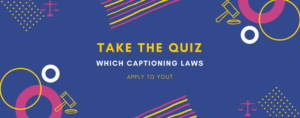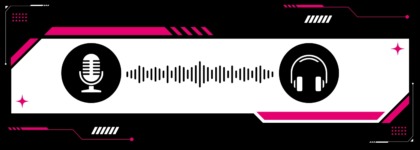How the Rehabilitation Act of 1973 Impacts Video Requirements Today
Updated: March 16, 2021
It is no surprise that technology – including video – has changed tremendously since 1973. How then can the Rehabilitation Act of 1973 still accurately and justly impact video accessibility today?
A History of The Rehabilitation Act
There are three major accessibility laws in the United States, one of which is the Rehabilitation Act. The Rehabilitation Act is a broad federal anti-discrimination law with two sections that directly impact video accessibility – Section 504 and Section 508. The Rehabilitation Act of 1973 replaced the Vocational Rehabilitation Act in an effort to broaden the protection of individuals with disabilities.
The Rehabilitation Act of 1973 originally placed the most emphasis on equal employment practices, reasonable accommodations, and federally subsidized programming for individuals with disabilities. Amendments to the act – as well as lawsuits – have led to a more far-reaching interpretation of the law, and have updated the act to keep up with current trends and technologies.
Section 504
Section 504 requires equal access for all individuals with a disability, and applies to federal and federally funded programs. It states: “No otherwise qualified individual with a disability in the United States […] shall, solely by reason of her or his disability, be excluded from the participation in, be denied the benefits of, or be subjected to discrimination under any program or activity receiving Federal financial assistance or any program or activity conducted by any Executive agency or by the United States Postal Service.”
There have been several lawsuits having to do with video accessibility involving violations of Section 504. One noteworthy case was the National Association of the Deaf v. Harvard and MIT, where the complaint against the universities cited a violation of Section 504 for failing to provide adequate closed captions for online video content.
Unfortunately, modern IT and web accessibility is not directly addressed in the current language of Section 504. This has lead towards proposals to update Section 504 to effectively reinforce existing IT and web accessibility requirements already written into Section 508.
Early 2017, the DOJ issued a Notice of Proposed Rulemaking (NPRM) to update and revise Section 504. The proposal includes making changes to Section 504’s language so that it is up-to-date with modern technology.
Section 508
In 1998, about two decades after the Rehabilitation Act was signed into law, Section 508 was added to address the development and more mainstream usage of the Internet. Section 508 expanded the law to require federal communications and information technology be made accessible, and similarly, ensures web content be accessible. Under this law, alternative, accessible information technology must be provided when necessary.
This section directly applies to federal programs, and there are many other laws that extend Section 508’s impact to non-federal programs as well.
The 508 Refresh
Even with the addition of Section 508, a lot has changed since the 90s and early 2000s – particuarly in the case of video and the digital web. Section 508 was recently refreshed – phased in in January 2018, and now references language from the Web Content Accessibility Guidelines (WCAG) 2.0. This means that closed captioning and audio description requirements are now written directly into Section 508 through the WCAG 2.0.
The National Federation of the Blind imposed several complaints for violations of Section 508 by federal websites, all of which would be covered under this section.
Like all good trends, the Rehabilitation Act is back (or still) in style. Staying current with accessibility laws is not always easy, but we are here to help you.
__
Take the quiz below to find out which accessibility laws apply to you!
Further Reading

Subscribe to the Blog Digest
Sign up to receive our blog digest and other information on this topic. You can unsubscribe anytime.
By subscribing you agree to our privacy policy.










